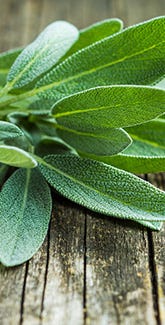Growing Onions is Nothing to Cry Over


Onions Growing Guides
Onions come in three distinct colors - white, yellow and red, and the varieties can be classed into three important groupings - short day, intermediate day, and long day. These groupings refer to the number of hours of sunlight required to get the onion to bulb. Short Day onions require 10-12 hours of sunlight and are used in the south for winter production. And because Short Day onions have a higher concentration of water as opposed to solid fiber content, they do not store well and should be eaten fresh. Intermediate Day onions require 12-14 hours of sunlight and are ideal for almost all growing areas in the United States. Long Day onions require 14-16 hours of sunlight and grow better in northern states where there are extended hours of daylight during the summer months. Long Day varieties typically have a more pungent flavor and store better than other varieties.
Sowing: Onions may be planted in the fall or the spring (fall plantings will mature earlier). The plants are hardy and can withstand temperatures as low as 20 degrees Fahrenheit, so spring plantings may be made as soon as the soil can be worked. Plant the bulbs root end down, 2" deep, making certain that the growing point is exposed above the surface of the ground. Leave 3" between bulbs in rows 18-24" apart. Mulch immediately.
Growing: Onions can be grown in many different types of soil, but the plants prefer a rich moist sandy soil. Turn the soil and add some lime before planting. In the spring, apply a nitrogen and phosphorus rich fertilizer (10-20-10) and water like any garden green. Onions planted in the fall go through a short (approximately 2-week) dormant period, and then roots emerge and leaves sprout. With the onset of winter, the leaves die back and the roots cease to grow. This process is called vernalization. Proper bulbing is a function of adequate growth, vernalization, and subsequent growth under longer days. Bulbs planted in the spring must experience some minimal cold treatment in order to insure proper bulbing. Onions are shallow rooted and benefit from frequent weeding as the roots cannot tolerate competition from weeds.
Picking: Onions will be ready to harvest in approximately 100 days when the leaf tops have fallen over and dried. On sunny, breezy days, onions can be allowed to cure in the field for a day or two before being taken to a curing area. Curing must take place for the onions to be stored for any length of time. Cure onions by placing them in a warm, well-ventilated area until the necks are thoroughly dry. With warm temperatures, good air circulation, and low humidity, curing should be completed within two weeks after harvest. Onions are best stored in a cool, moderately dry area in ventilated containers. Humidity in the 60%-70% is preferable. With good air flow and low humidity, onions should store for at least 6 months.
Eating: As with all plant foods, onions offer a host of health benefits, including aiding in the prevention and treatment of colon, prostate, esophageal, and other types of cancers. They are said to help lower blood pressure, support prostate health, maintain healthy skin and hair, and improve sleep and mood. In addition, according to the National Onion Association, "the phytochemicals in onions that scavenge free radicals may reduce your risk of developing gastric ulcers."
Knowing: Cutting onions is nothing to cry over. Really! Putting bread in your mouth, cutting the onion near a burning candle or underwater, chewing gum. There are so many suggestions for avoiding the tears and you may choose to test them all to see if any or all work for you. However, one tried and true method is to freeze the onion before cutting. It'll cut just as easily and will keep the tear-producing aromas at bay.
Container Friendly? While some smaller varieties of onions are okay to plant in larger containers, onions, for the most part, are best planted in a garden. This isn't so much because the plants need a lot of room to grow, but more so due to the weight of the onions as they reach maturity.



